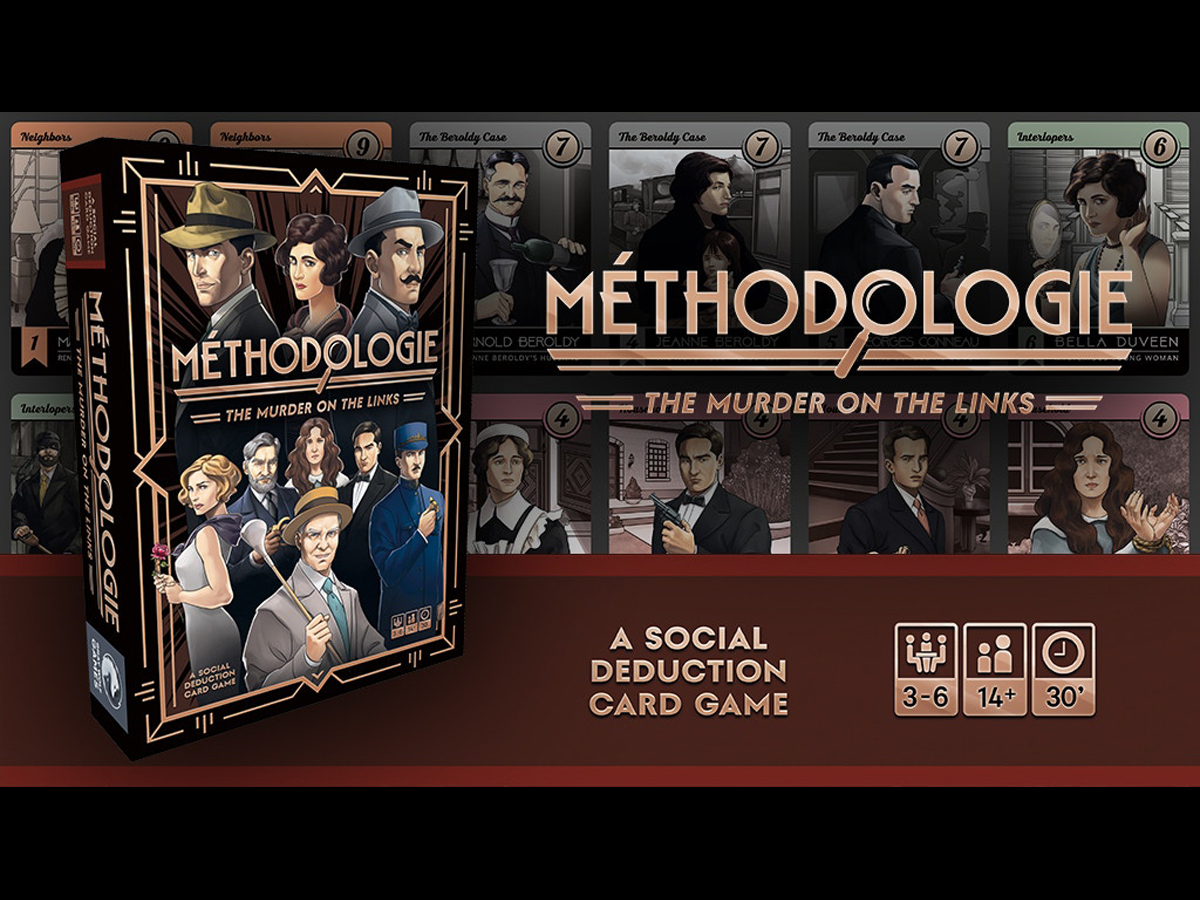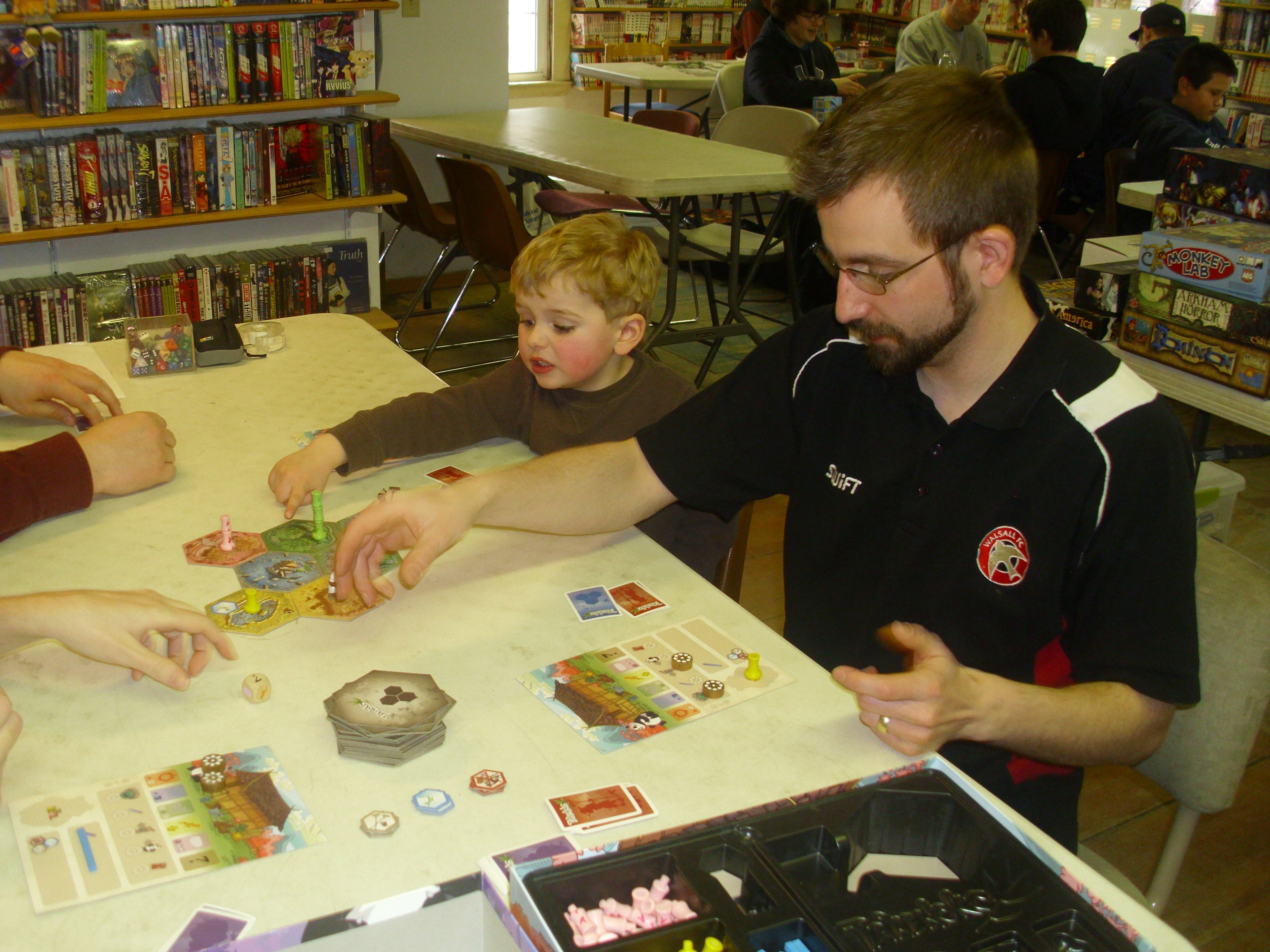
Based on Agatha Christie’s murder mystery, this game puts players simultaneously in the role of the investigators and the accused.
What Is Méthodologie: The Murder on the Links?
Méthodologie: The Murder on the Links is a social deduction game for 3 to 6 players, ages 14 and up, and takes about 30 minutes to play. It’s currently seeking funding on Kickstarter, with a pledge level of $30 for a copy of the game.
Méthodologie: The Murder on the Links was designed by Justin Waggle and published by Gray Wolf Games, with illustrations by Lea Ragos Segarra.
New to Kickstarter? Check out our crowdfunding primer.
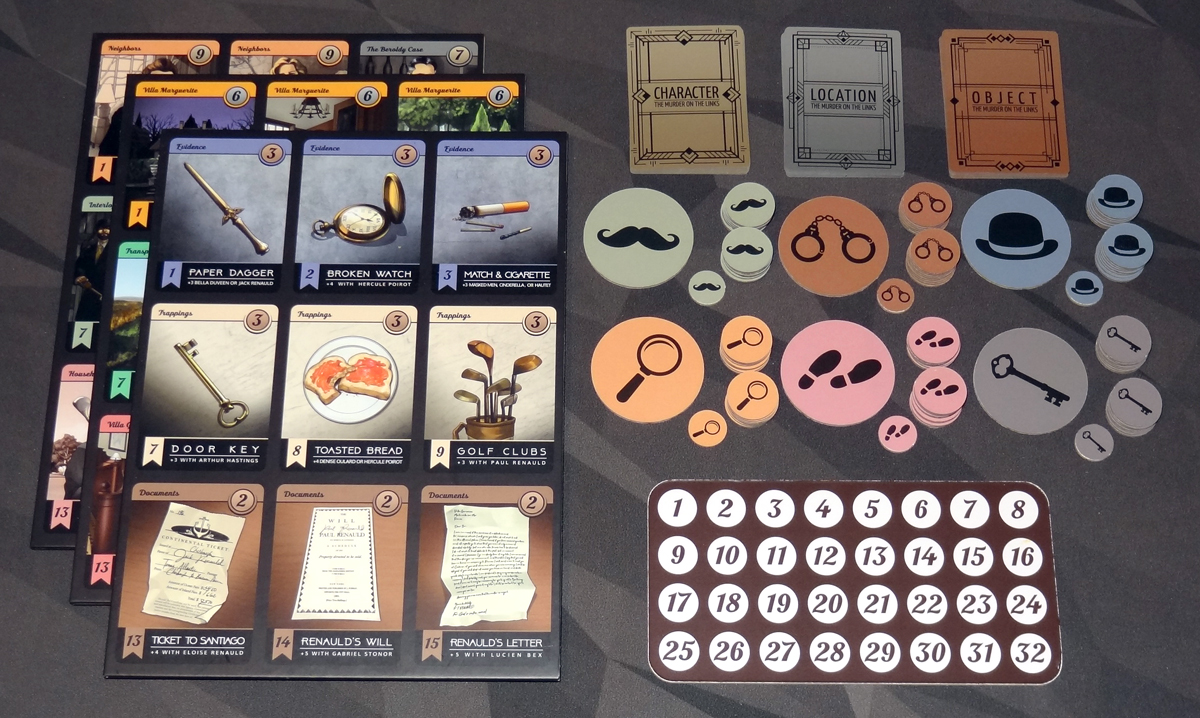
Méthodologie: The Murder on the Links Components
Note: My review is based on a prototype copy, so it is subject to change and may not reflect final component quality.
Here’s what comes in the game:
- 3 Boards (Character, Location, Object)
- 18 Character cards
- 18 Location cards
- 18 Object cards
- 6 Player tokens
- 6 Score tokens
- 90 Target tokens (15 per player)
- Scoreboard

The components themselves are fairly simple in this game: a bunch of cards, some simple tokens, and three main boards where cards will be played. The illustrations by Lea Ragos Segarra are lovely, though, and really help in creating the atmosphere—high society in the 1920s, fancy estates in France, and various trappings of wealth.
The three game boards depict all of the cards in each of the categories, ordered by their “rank,” and are used to hold cards as they’re played and eliminated from consideration. They’re also the primary reference you’ll have if you decide to bluff about what you have in your hand. The downside to this is that, because the boards are large—consider laying out an entire deck of cards on the table—it can be hard to see all the details on all of the boards from your seat. But it may be hard to bluff about what card you have if you’re not already familiar with the names, and players can see you looking over the board before you answer. It might be nice to have some small copies of the boards or something as a player aid, so each player could surreptitiously look over the list of options.
The tokens represent your player color and have simple icons on them as well: a hat, a magnifying glass, a mustache, and so on. The target tokens have your player color and icon on one side, and are white with other players’ icons on the backs. The scoreboard is a pretty simple grid, with a portrait side and a landscape side; it goes up to 32 points but none of the games I’ve played have come anywhere close to that—but it’s nice to have goals, right?
How to Play Méthodologie: The Murder on the Links
You can download a copy of the rulebook here.
The Goal
The goal of the game is to score the most points by retaining a good combo of cards and keeping them secret from the other players, and deducing what other players have in their hands.
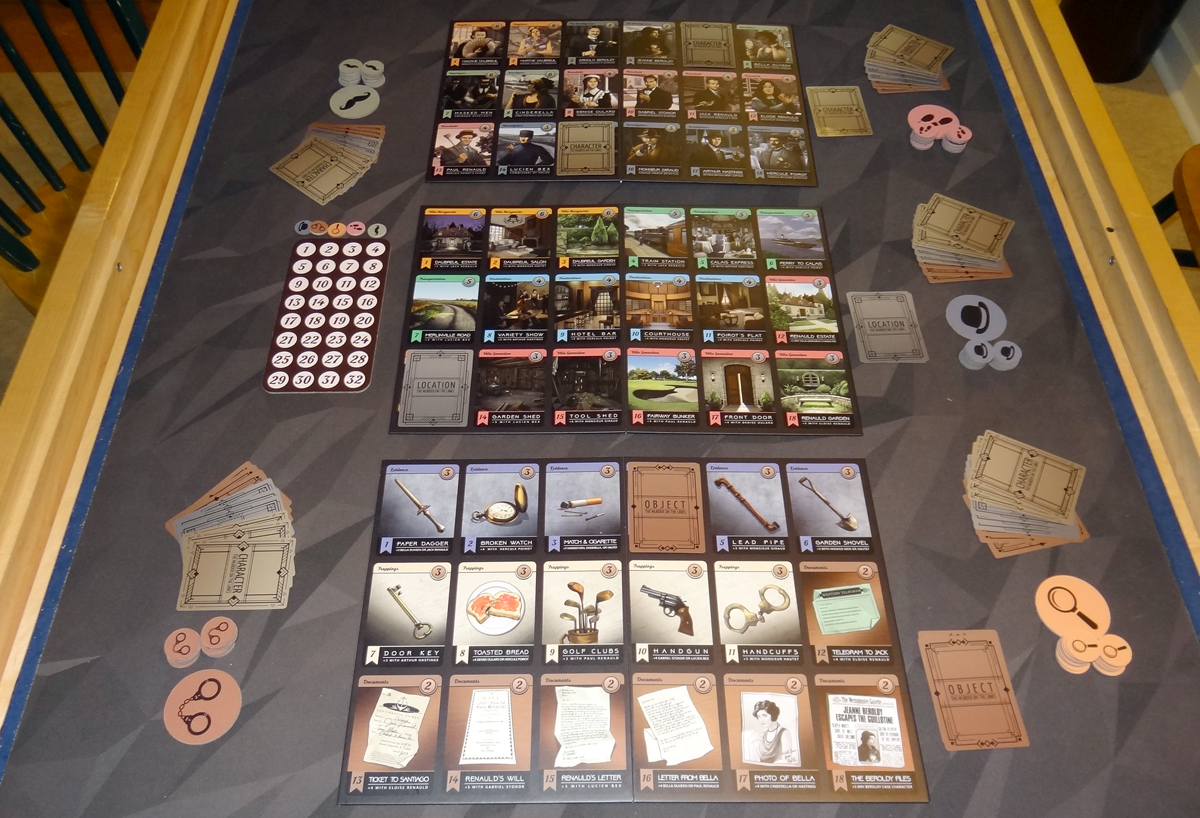
Setup
Set the three game boards out in the center of the table and shuffle each deck separately. Give each player 9 cards (3 each of Character, Location, Object). Depending on the player count, you may also eliminate a few more cards from each deck—eliminated cards are played face-down on the corresponding spaces on the boards. Set any remaining cards next to the boards.
Give each player a player token, and the target tokens corresponding to all of the other players. Set the scoreboard nearby with the player scoring tokens next to it.
Gameplay
The game has an Investigation Phase and an Accusation Phase.
Investigation Phase
Each round, each player will “present evidence”: select 3 cards from their hand to play face-down. You may choose any categories of cards, but you must always keep at least 1 card of each type if possible. Once everyone has chosen their cards, they are resolved in the order Character, Location, Object. (If you somehow have 3 or fewer cards in your hand, you do not present evidence.)
Everyone reveals Character cards they have played. Whoever played the highest ranked character conducts an interrogation. First, they ask all players if they have any character cards of the same set (color) as the one played by the interrogator—players must respond truthfully. Then, the interrogator asks each player who said “yes” which character they have—the player may tell the truth or lie.
The interrogator may then optionally choose one of those players and do a background check, asking them to reveal the card they claimed to have. If they reveal the correct card, the interrogator must discard one of their own cards. If the player lied, then they must discard the character card from that set.

This process is repeated for the Location cards and Object cards.
All of the cards played are then placed onto the boards, face-down, in their corresponding locations, to show that those cards have been eliminated.
Then, starting with the player who played the highest ranked character, players take turns drawing cards (from any of the three decks) to refill their hands. (If the cards run out, then draw as many as there are.) A new investigation round begins.
Accusation Phase
The accusation phase begins when every player has 3 or fewer cards in their hand after playing their face-down cards. In this case, you skip the rest of the investigation round. The face-down cards are not revealed and are set aside as undisclosed evidence. Any player who has multiple cards of the same type must discard cards face-down until they have at most one of each type.

Players now use their target tokens to mark which cards they think their opponents have kept in their hands. You have three tokens for each opponent, so you can mark the Character, Location, and Object for each player.
For each player, you look to see which card is the majority accusation—that is, it has the most votes of the player’s icon. (In the photo above, the majority accusation for the derby hat player is Arnold Beroldy because it has the most votes.) If there’s a tie between two cards, the majority accusation is the higher-ranked card.
If the majority accusation is correct, then you must reveal the card from your hand, discarding it face-up in front of you. It is eliminated from your hand and you will not score points for it.
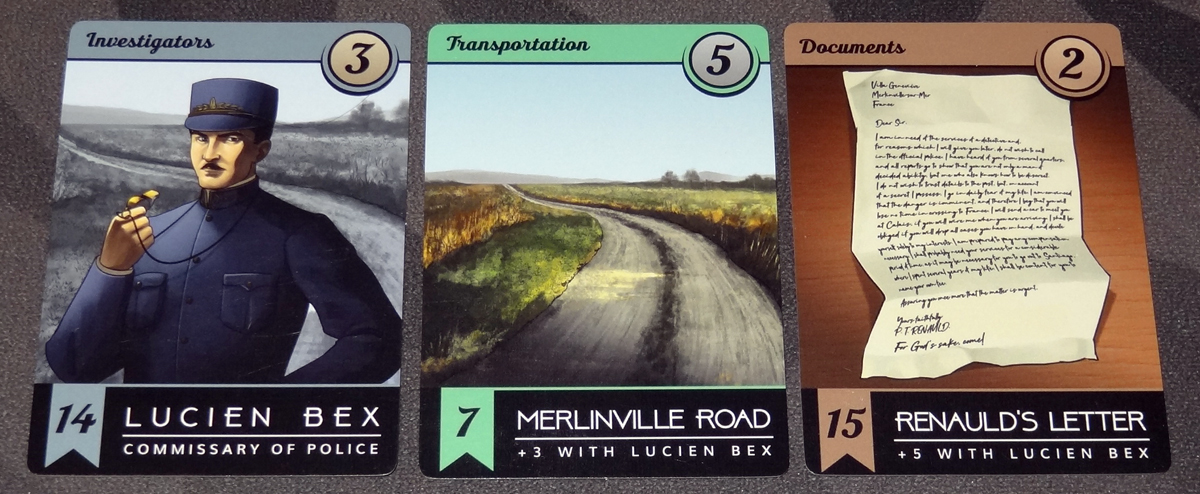
Game End
After the accusations are resolved, players reveal any cards remaining in their hands and score points for them. Each card is worth the points shown in the upper right corner. In addition, Locations and Objects have bonus points if paired with the correct Character. In the example above, the player would score 10 points for the base values, and an additional 8 bonus points because Merlinville Road and Renauld’s Letter are both worth bonus points when matched with Lucien Bex.
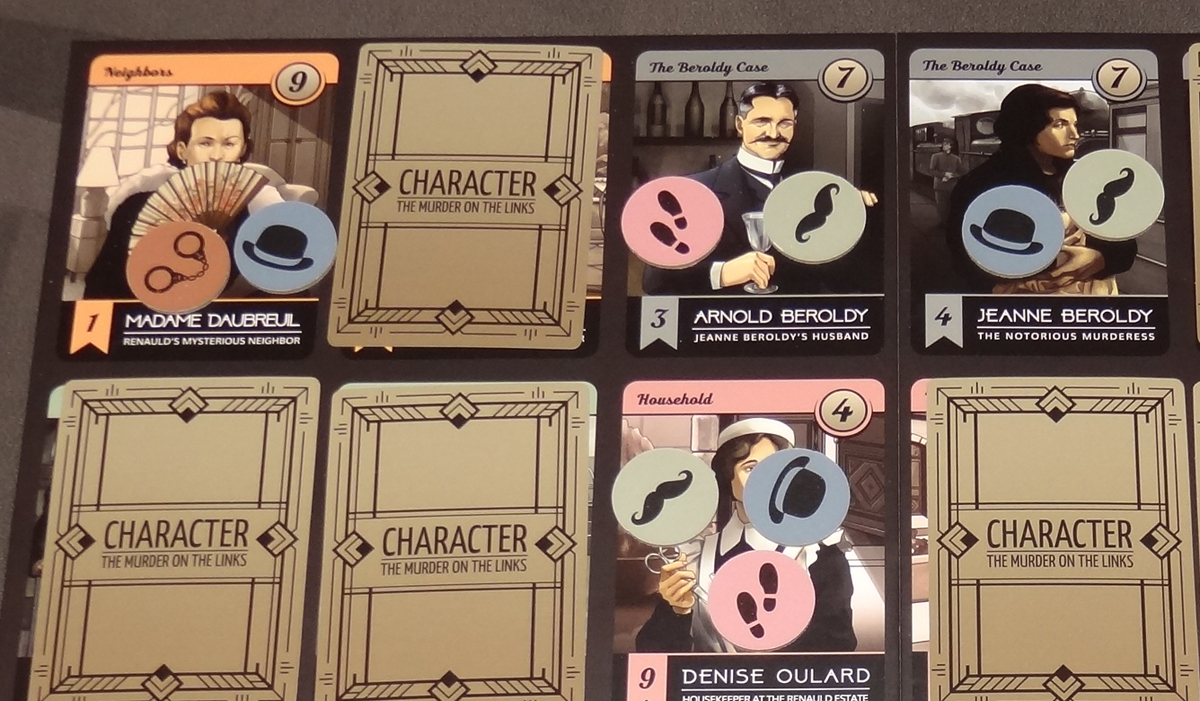
Finally, the target tokens are flipped over to show who guessed what. For each correct guess (whether the card was eliminated or not), you score 1 point.
The highest score wins; ties are shared victories.
Why You Should Play Méthodologie: The Murder on the Links
I’ll confess: I have not read Murder on the Links, so I wasn’t familiar with the story itself, though I understand it’s a story in which there are several suspects and a few inspectors with competing theories. The game doesn’t require knowledge of the book, though I’d guess those familiar with it would probably have a better appreciation of the theme, and the various scoring combos may hold some more meaning.
Interestingly, the game isn’t exactly about solving the murder—in fact, the game doesn’t give away the ending of the book. Instead, the game represents players scheming and recruiting accomplices while trying to expose everyone else. Everyone has something to hide. Unlike a game like Clue, where everyone is trying to find one single combination, Méthodologie challenges players to figure out everyone else’s combinations‚ which could even be changing during the course of the game.
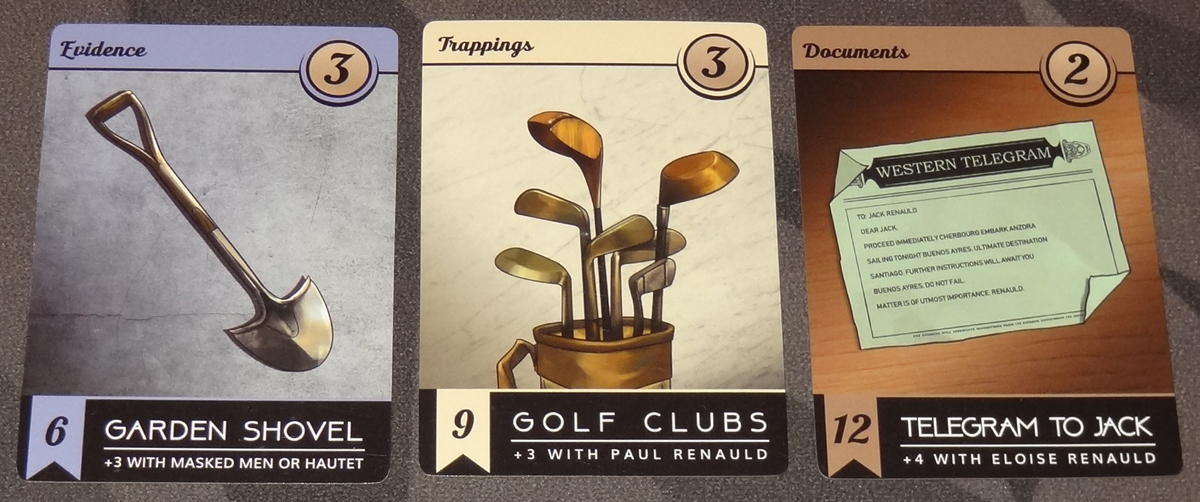
I played Méthodologie a few times on Tabletop Simulator, and then got to play a physical prototype recently. I think it took me the first playthrough to see how all the pieces fit; now I understand the gameplay but I’m still trying to figure out the best strategy. Your two goals, which you pursue simultaneously, are trying to get the best scoring combination (and keeping that hidden) while figuring out what your opponents have.
The higher a card’s rank, the more points it’s worth, usually, and the Characters are worth the most—which means you need to work the hardest to keep them a secret. It’s hard to know whether to go for high ranks (even if you can’t get a combo), or to put together combos for bonus points. The rulebook has a list of all of the scoring combos from highest to lowest, which you can use as a reference when trying to figure out what people have. Keeping cards that don’t match may not get you any bonus points, but maybe it will make it harder for others to eliminate your cards.
When you’re the subject of an interrogation, you’ve revealed the color of one of your cards, and maybe you’ve stated what card it is. In some instances, you may have even revealed the card itself. Now everyone knows you have it. Is it worth keeping it anyway, or playing it to get it out of your hand?
The accusation phase is triggered when everyone is down to their final set—but there are still some undisclosed cards that have been played that round. That’s where the uncertainty comes in. Many of the cards will have been eliminated already, but there’s still room for doubt. If I showed you the broken pocketwatch earlier in the game and then never played it, maybe I’ve dumped it in the last round… or maybe I decided to keep it after all. How do you figure it out?
There isn’t a clue sheet for you to take notes, though I’m not even sure that would always help. If you discover in the first round that nobody else has a Villa Marguerite card in hand, that doesn’t mean nobody has drawn (and kept) one by the end of the game. The more players you have, the fewer cards are left in the decks, so the game has a slightly different feel in a 3-player game vs. a 6-player game. In a 3-player game, you’ll be drawing more cards, so there’s more room for swapping things out (or trying to dig through a particular deck for the card you want), but in a 6-player game all the cards will be dealt out, so if somebody says they don’t have a “Neighbor” in their hand then they’ll never have one.
The optional background check can allow for some interesting shenanigans, too. In one game I played, one player told me he had the pocket watch item, and I decided not to question him. On a later round, he was the interrogator, and a third player told him she had the pocket watch. I figured that if he had the watch himself, then he would do a background check and force her to discard a card; if he didn’t do the background check, then he lied to me. What I didn’t expect was that he did have the watch and knew the other player was lying, but he decided that corroborating her lie helped hide the truth from me!
The accusation phase is where things start to shake out. After everyone votes for Characters, you do find out if cards are eliminated, so you will know whether the majority accusation for each player was correct or not. (For incorrect votes, you still don’t know what the player does have.) That information could help you a little when you make your guesses for Locations, and again for Objects, depending on whether you think the player was building a combo or not.
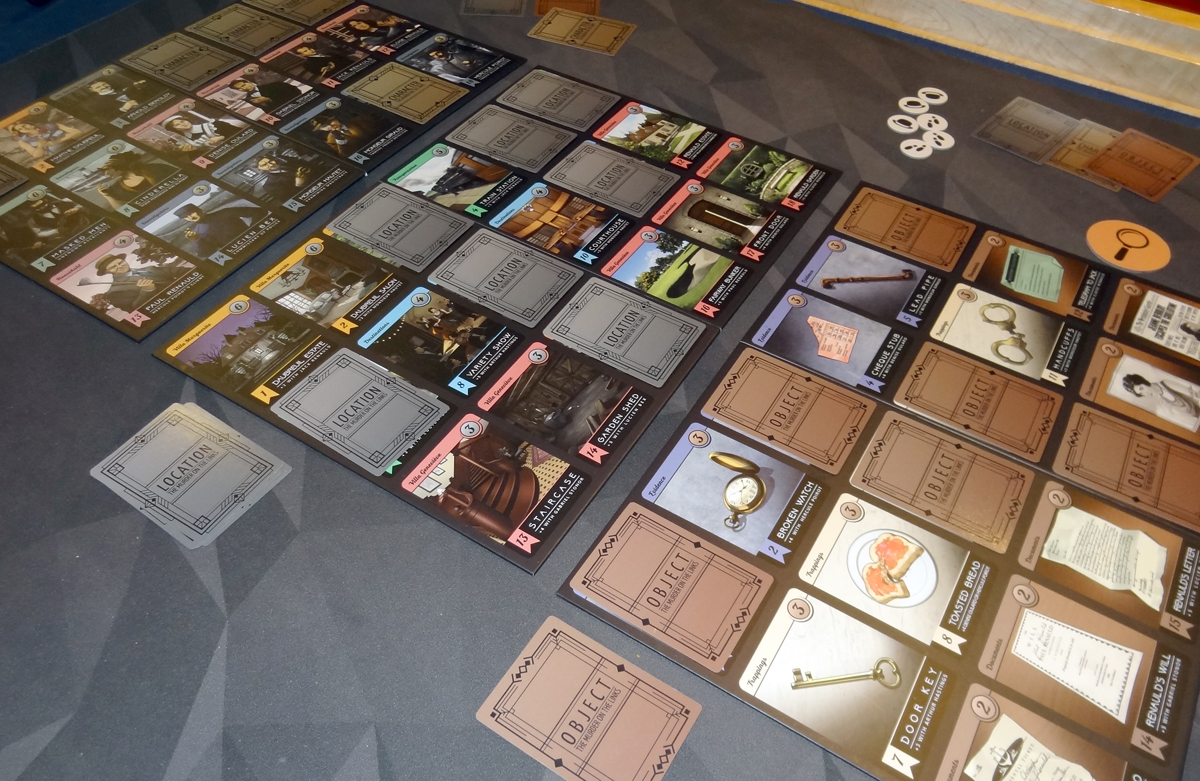
Méthodologie is an intriguing game, and is a neat twist on murder mystery. It’s a mix of what I’d usually call a deduction game (like Clue) and a social deduction game (like Werewolf), because of the way that you do narrow down the possibilities, but there’s also room for bluffing and subterfuge. Although there is a scoring mechanism, it can be satisfying to correctly identify somebody’s cards even if you end up behind on the scoreboard.
If you enjoy high society and murder mysteries, it’s worth investigating!
For more information or to make a pledge, visit the Méthodologie: The Murder on the Links Kickstarter page!
Click here to see all our tabletop game reviews.
![]() To subscribe to GeekDad’s tabletop gaming coverage, please copy this link and add it to your RSS reader.
To subscribe to GeekDad’s tabletop gaming coverage, please copy this link and add it to your RSS reader.
Disclosure: GeekDad was loaned a prototype of this game for review purposes.
Click through to read all of “Kickstarter Tabletop Alert: ‘Méthodologie: The Murder on the Links’” at GeekDad.If you value content from GeekDad, please support us via Patreon or use this link to shop at Amazon. Thanks!
